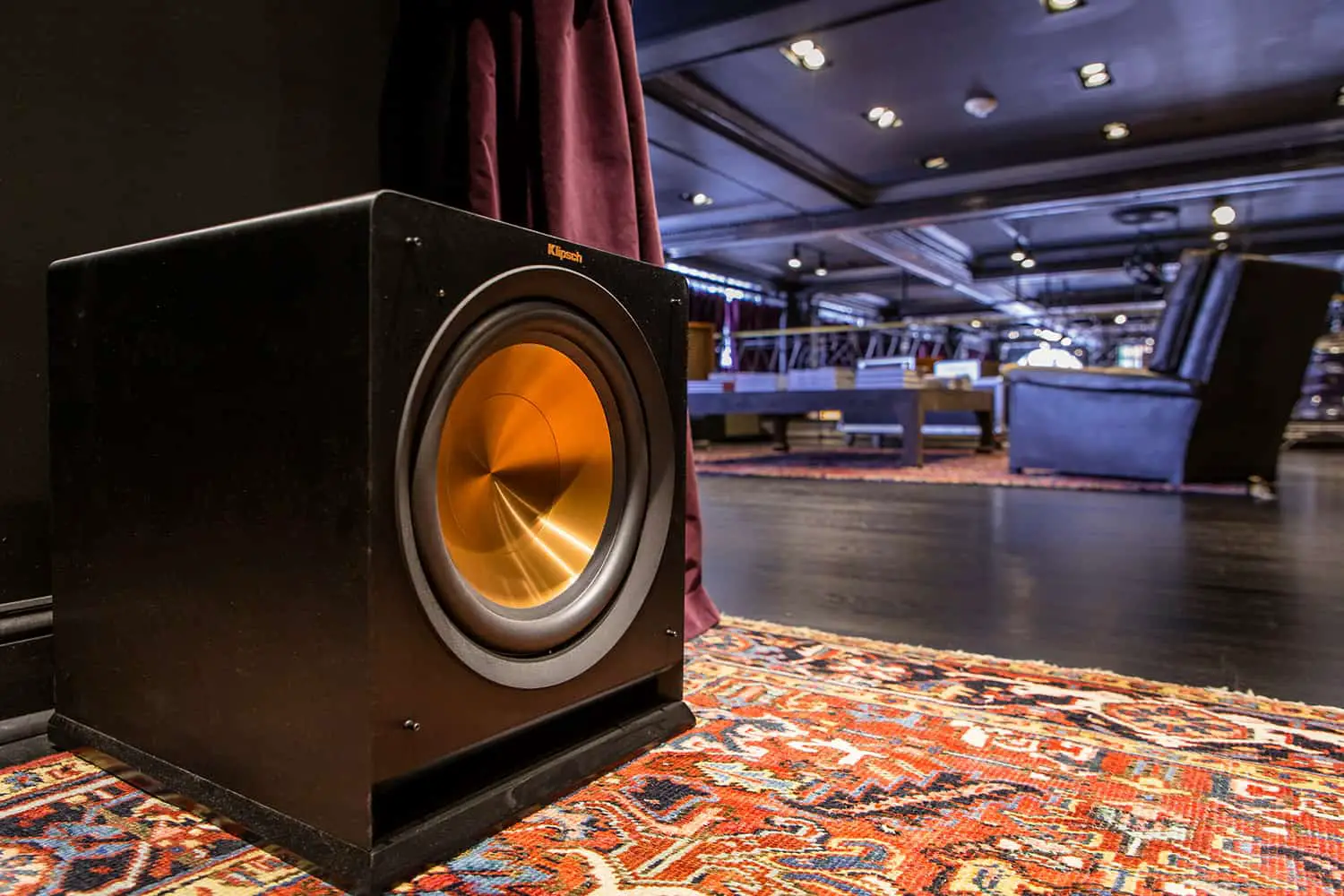Table of Content
- Trap That Bass!
- Why Use a Subwoofer?
- Sign up for the Klipsch newsletter and get the latest info on product releases, firmware updates, and much more!
- Ready to shake the ground and boost the boom in your room?
- Related reviews
- Subwoofer placement in rear of the room
- SVS 3000 Micro Subwoofer with Fully Active Dual 8-inch Drivers
I decided to look some more into the best placement of a subwoofer, and why it’s so important. A subwoofer placed in the corner of a room may increase the subwoofer’s output – causing the sub to sound louder. Try placing your subwoofer in a corner and see how it sounds. However, depending on your floor space, a corner might not be a viable option for your subwoofer if it’s too far from your listening area.
Next, play some bass-intensive music (movies are unreliable and don’t give your ear something familiar to latch onto). If while listening you notice an obvious drop in bass energy (or what we like to call “suck-out”) near the frequency at which your subwoofer and main speakers crossover, you need to make adjustments to your phase control. Mid-range and higher A/V receivers now have automatic room correction . While they can detect things like channel levels and speaker distance, they are notoriously inept when it comes to determining crossover settings.
Trap That Bass!
For the most part, corners aren’t really a subwoofer’s friends. Placing your subwoofer in a corner causes the bass waves to bounce off the wall in different directions, often crossing over each other on their way back. This can result in muddy bass tones, which no one wants. The one placement work for one room might not work for another room. Also, its placement with the front speakers will ensure that the subwoofer is matching their tonality. This tonality can’t be achieved when placing the sub at the rear.
A new study finds that customer ratings have a significant impact on subwoofer for home theater purchases. The research, conducted by University of Pennsylvania professor Wharton School marketing, shows that a one-star increase in customer ratings can lead to a 5 to 9 percent increase in subwoofer for home theater sales. The findings have important implications for businesses, as they suggest that even small changes in customer ratings can have a big impact on sales.
Why Use a Subwoofer?
The only place where you will hear the bass output that your subwoofer produces exclusively is out of doors . If you are sitting in a null, you won't hear any deep bass at all. Conversely, if your chair is in a location where standing waves peak, you will likely hear boomy, one-note bass (you won't be able to follow the tuneful bass line of a recording, for example).
The closer you sit to a wall, the more pressure your ear will pick up and the greater the bass intensity will be, but it may become uneven-- alternately boomy or anemic as you move in either direction. If you have hardwood or concrete floors, investing in some carpet or a rug will help tremendously. For those with hardwood floors, the use of floor spikes and protective discs under your sub will make a difference. If you want to spend more money, you can also consider a dedicated subwoofer stand . When it comes to A/V awesomeness, a subwoofer is an elite addition to any home entertainment system. There’s just something primal about a box made for the sole purpose of rattling your bones and delivering low tones.
Sign up for the Klipsch newsletter and get the latest info on product releases, firmware updates, and much more!
Additionally, a sub’s close proximity to a flat wall can cause a harsh, rumbling, unpleasant sound. And if your subwoofer is a ported design , you’ll want to keep it twice the diameter of the port (typically 6-12 inches) away from a wall to allow airflow out of the port. Adding a subwoofer to any audio system can enhance your music and movie listening experience.

And given the understanding that no room is ideal , the trick is to combine careful subwoofer and furniture placement to more evenly distribute the deep bass frequencies throughout the room. Then every listener will hear the powerful bass frequencies that bring impact to home theater and music. The idea is that, by placing your subwoofer a third of the way into your room as measured from a wall, you reduce the effects of standing waves, nulls, and suck-out where the bass can sound thin or be less responsive. Mathematically speaking, by following this guideline, the odds that your sitting area will be a “good bass spot” are increased. I’ve always felt that subwoofers are often the most overlooked part of a speaker system, but in mind are the most important. Pretty much any device with audio output comes with speakers, but it’s the subwoofer that really enhances your listening experience.
The subwoofer provides its own power and includes impedance matching circuitry, so this will not reduce the power output to the front speakers or affect the overall impedance load on the amplifier. Controls are simple on the back panel, with a dedicated LFE input and knobs for crossover, phase, and volume. KLH has updated their Stratton subwoofer line substantially, in all the right ways. If you have a sound bar that offers a subwoofer designed and configured for that system and that you can connect wirelessly by simply turning the unit on, your decision may already be made.

You have to place the subwoofer in the audience seating area, and you have to crawl around the home theater to observe where you are feeling the best bass in the room. If your sub is ported, then the air coming out of the port will also contribute to the noisy sound. You need a sub to be well ventilated, and its port air should not be colliding with anything. Because these pads are placed at the bottom of the subwoofer and the other side of the subwoofer enclosure is exposed to resonate with the cabinet of a desk or something else’s cabinet it is kept in it. It can contribute to a 3rd issue, which I am going to discuss in the below placement. You will know what that 3rd issue is by reading the second placement option.
This sub’s exceptional performance is a result of SVS’s engineering achievements with their speaker and amplifier technology as well as their cabinet design and configuration. The long-throw 12" driver is designed to be highly efficient, dissipating heat quickly and responding instantly to content. As a general rule, placing your subwoofer in a corner or close to the wall is going to result in more bass, but not necessarily the best bass. Unfortunately, all you’re really getting is more of the same crappy bass. While we concede that a corner is often the most convenient option, it is rarely the ideal option. All subwoofers produce acoustical pressure, and that is what your ear responds to.

Bass traps can be used in listening rooms or home theaters. They reduce the amount of reflected energy in the room. This can decrease the severity of modal peak and null, as well as minimize decay/ring times. The subwoofer should “vanish” into the sound, giving the illusion that the entire system reproduces the bass response. A well-integrated subwoofer can also increase the soundstage’s depth and width.
It’s better to do the crossover calculations yourself than rely on an automated system. Automatic calibration can be used for all your speakers. The wattage rating of any subwoofer is merely an indication of its capabilities, but it is not a representation of its proficiencies. For example, a 1000-watt subwoofer may be able to function decently when played at higher volumes; it may also perform even better when played at more moderate levels.

With this article, Hooke Audio will help you answer this question. Hookeaudio.com and its partners may earn a commission if you purchase a product through one of our links.

No comments:
Post a Comment